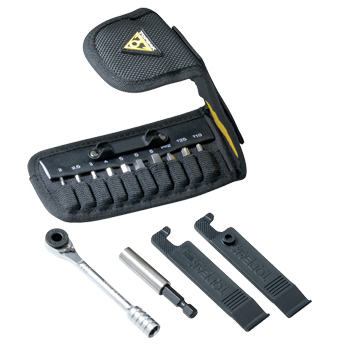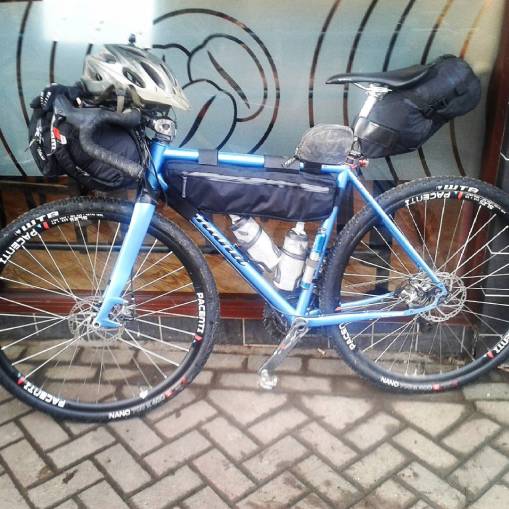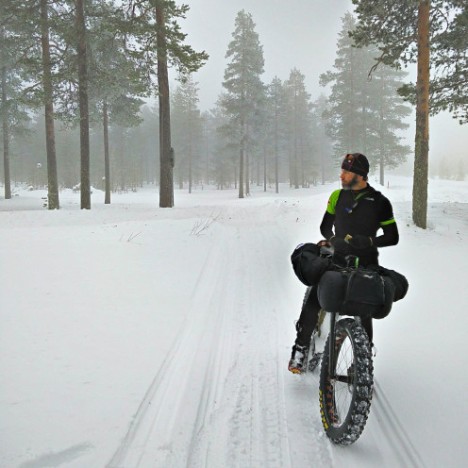A few weeks ago, I met up with Ian Barrington, who is a keen bikepacker and long distance racer. Here are his bikepacking tips:

Ian Barrington
1. Ian and I are both very aware of how frustrating it can be when you notice how much time you have spent faffing around on a bike ride. Even if I don’t take a long lunch break, my long rides often take me 12 hours, with only 10 hours of of actual cycling, and I often wonder where those two hours have gone. When Ian races, he sets up his Garmin to show the actual riding time and the total time. He actually makes it his challenge to keep the gap between riding time and total time as small as possible. He sees that time as time that is lost and can never be made up again. Concentrating on that gap gives him focus and encourages him to use is time off the bike efficiently.
2. This point is linked in with the first one: In order to reduce the gap between riding time and total time, Ian only gets off the bike if there are at least 4 things he has to do that require a stop (e.g., going to the toilet, stocking up on food, putting a jacket on, checking the route).
3. Ian uses a Topeak mini ratchet rocket instead of a classic multitool. This ratchet is easier to use because it gives you more leverage and allows you to access screws in tight spaces better. Another advantage is also that it’s pretty light.

4. Ian powers his lights and electrical items using the SON dynamo hub and Exposure Revo lights. He recommends the SON dynamo hub because they have been in the game the longest, have great durability and quality, and have the lowest drag numbers.
5. We also talked about how best to pack a bike. Ian’s advice is to put the heavy stuff in the handlebar bag and the frame bag, and any bulky or light stuff can go in the seat post bag. Food and anything else you need quick access to while on the bike can go into a top tube bag at the front.
6. Ian works for Wildcat Gear, a company that manufactures great quality bikebags! The clever design of their bags convinced me to use them for my trip. Now I just need to decide which colour to get! 🙂

Cleverly designed & smart looking bike bags
I will be using their handlebar harness, which holds a simple dry bag. This option works well with the limited space between my drop bars (I ride 38 cm wide handlebars). The main advantage of this system is that my gear is in a dry bag, which makes it easily removable from the bike when I stop off somewhere. The harness will always stay attached to the bike.
The frame bag will be custom made for the size of my frame. It will probably not have zips, as they have the potential to fail with repeated use. Instead, I will have a roll top. Because of the size of my bike, I am also keen for Wildcat Gear to incorporate my water storage in this bag.
Wildcat Gear have also replaced the classic saddle bag with a harness holding a dry bag. This will keep my gear dry and can easily be removed from the bike when I get to my destination. The lack of water resistance and tendency to sway about when climbing are two common failings of most rear bags, but these problems have been successfully addressed by Wildcat Gear.

Thanks for chatting to me, Ian! It’s always great to get advice from people in the know!

Is that a Stoater ?
LikeLike
Indeed! It’s Ian’s! A right Bobby Dazzler, eh?
LikeLike
Nice tire clearance.
LikeLike
No Mudguards………………fail!
LikeLike
Mudguard are pretty useless. If it’s rainy then you’ll be wet.
LikeLike